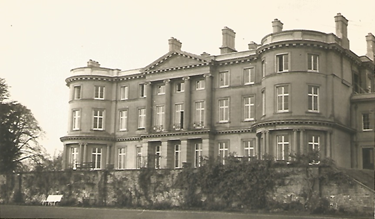Roman Abergavenny
The Roman Fort Plaque in Castle Street
The Romans and Abergavenny
The Roman name for Abergavenny was Gobannium
– it is listed in the 3rd century road map known as the Antonine
Itinerary as a stopping-place or mansio, which suggests it was a place
of some importance. Gobannium is a
Latinised version of an original Celtic place-name, now thought to be ‘the
place of Gobannos’, a celtic smith-god.
The earliest Roman occupation at
Abergavenny in the first century AD was a fort built at the same time as the
one at Usk. Archaeological excavations have found the remains of timber framed
buildings and even a cast window-pane – luxury!
Later excavations showed that there
were several phases of building on the site of the Roman fort which is where the
Castle Street car park now lies. It seems to have followed the traditional form
of a Roman fort with barrack blocks, granaries and a central administrative
building. Much of their rubbish was thrown over the rampart at the top of the
slope down to the River Usk below, and this has been a treasure trove of found
objects, many of which are now in Abergavenny Museum. Other finds suggest a
metal working area in the area now known as Flannel Street.
Some of the finds, such as parts of the
plate armour of the soldiers, chain mail and parts of horse harness, suggest
that the fort was garrisoned by an auxiliary cavalry unit or a mixed infantry
and cavalry unit. The rebuilding of the fort was probably done by troops from
the Second Augustan Legion based at Caerleon.
A small civilian settlement (vicus)
grew up just outside the fort and excavation finds suggest this was around the
area of the junction of Monk Street and Cross Street. The excavation of some
hypocaust tiles used for the under-floor heating suggest at least one Roman
style mansion. A well-made Roman Road
leading north to Kenchester was discovered in about 1848, and cremation burials
and finds turn up from the areas alongside. It was customary for the Romans to
inter their dead with offerings alongside roads leading out of the settlement
and finds have included broaches and pottery with dates varying between AD 60
to the second half of the second century AD.
On the north side of Abergavenny, the discovery of the Leopard cup in
2003 (now in the National Museum as the drinking cup with a leopard for a
handle is very valuable and rare) was the highlight of these discoveries. More
recently, excavations behind Gunter Mansion in Cross Street revealed another
Roman Road going east.
Discovering Abergavenny: Archaeology
and History by Frank Olding. The
first edition of this book is now under revision with new and exciting material
and will be ready later in 2020.
Information provided by Dr. Gill Wakley
These Roman artefacts can be seen in Abergavenny Museum and we thank curator Rachel Rogers for permission to display them. The oil lamp was found in Abergavenny and is mid first century and was probably imported from North Africa or the Middle East.
The two large broken jars contained cremated bone and soil, and are one of the earliest cremation burials in Wales, dating from around AD. 60. They were found with offerings to the dead. They were found together at Park Crescent Abergavenny.
Information provided by Dr. Gill Wakley
These Roman artefacts can be seen in Abergavenny Museum and we thank curator Rachel Rogers for permission to display them. The oil lamp was found in Abergavenny and is mid first century and was probably imported from North Africa or the Middle East.
The two large broken jars contained cremated bone and soil, and are one of the earliest cremation burials in Wales, dating from around AD. 60. They were found with offerings to the dead. They were found together at Park Crescent Abergavenny.





